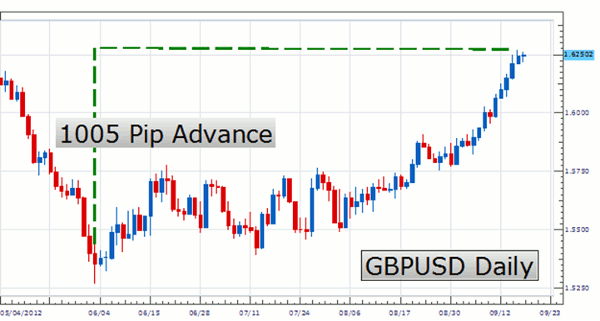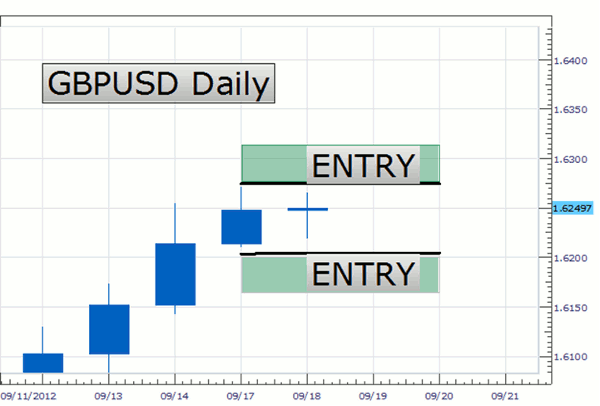Walker England of DailyFX.com explains how to trade a popular technical analysis pattern in forex using the British pound as an example.
Like the majority of US dollar-based pairs, the GBP/USD has been moving higher since June 2012. From the low created on June 1 at 1.5267 through yesterday’s high at 1.6272, the pair has advanced as much as 1,005 pips.
Currently, the trend is at a standstill, neither creating new highs nor new lows with today’s price action. This form of consolidation is called an inside bar, and can be useful to help traders prepare for breakout entries. Let’s take a look at this developing price pattern and learn about inside bars.
Zooming in on the chart (depicted below), we can see the development of an inside bar on the GBP/USD daily graph. As described in a previous article, an inside bar occurs when today’s price action does not exceed the previous day’s high or low.
Price action from Monday printed a daily high of 1.6272 and a low of 1.6210. Tuesday's action yielded a daily high at 1.6266 and a low of 1.6219, both inside our previous candles levels mentioned prior.
Breakout traders can use entry orders to trade a break of either the previous high or low. Traders can choose a directional bias for their entry with the trend or use an OCO order (one cancels the other) to cover both a long and short entry.
One entry will be placed above the mentioned high at 1.6272 to buy on the creation of a new high. Conversely, an OCO will set an order to sell if prices drop below 1.6210. Once these entries are set, risk can be managed, as stops can be placed between both entry points.
>My preference is to place an OCO entry order on the GBP/USD near the September 17 high/low. Stops will be placed between the OCO orders near 1.6240. Traders can use a risk-reward ratio of 1:2 or better looking for a minimum of 60 pips.
Alternative scenarios include continuing to trade “inside” prior to a breakout.
Walker England is a trading instructor at DailyFX.com.




















